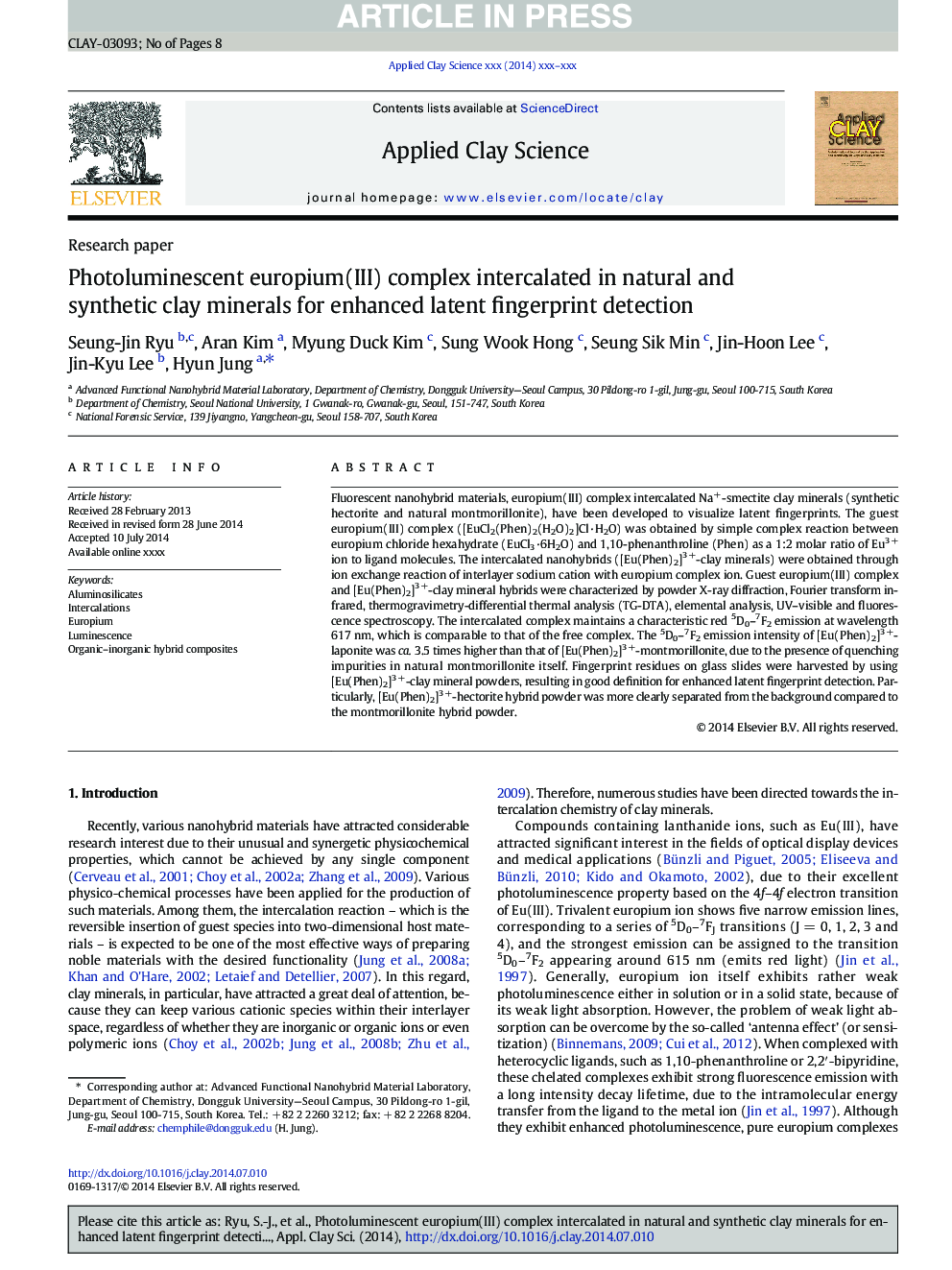| Article ID | Journal | Published Year | Pages | File Type |
|---|---|---|---|---|
| 8046740 | Applied Clay Science | 2014 | 8 Pages |
Abstract
Fluorescent nanohybrid materials, europium(III) complex intercalated Na+-smectite clay minerals (synthetic hectorite and natural montmorillonite), have been developed to visualize latent fingerprints. The guest europium(III) complex ([EuCl2(Phen)2(H2O)2]Cl·H2O) was obtained by simple complex reaction between europium chloride hexahydrate (EuCl3·6H2O) and 1,10-phenanthroline (Phen) as a 1:2 molar ratio of Eu3 + ion to ligand molecules. The intercalated nanohybrids ([Eu(Phen)2]3 +-clay minerals) were obtained through ion exchange reaction of interlayer sodium cation with europium complex ion. Guest europium(III) complex and [Eu(Phen)2]3 +-clay mineral hybrids were characterized by powder X-ray diffraction, Fourier transform infrared, thermogravimetry-differential thermal analysis (TG-DTA), elemental analysis, UV-visible and fluorescence spectroscopy. The intercalated complex maintains a characteristic red 5D0-7F2 emission at wavelength 617 nm, which is comparable to that of the free complex. The 5D0-7F2 emission intensity of [Eu(Phen)2]3 +-laponite was ca. 3.5 times higher than that of [Eu(Phen)2]3 +-montmorillonite, due to the presence of quenching impurities in natural montmorillonite itself. Fingerprint residues on glass slides were harvested by using [Eu(Phen)2]3 +-clay mineral powders, resulting in good definition for enhanced latent fingerprint detection. Particularly, [Eu(Phen)2]3 +-hectorite hybrid powder was more clearly separated from the background compared to the montmorillonite hybrid powder.
Related Topics
Physical Sciences and Engineering
Earth and Planetary Sciences
Geochemistry and Petrology
Authors
Seung-Jin Ryu, Aran Kim, Myung Duck Kim, Sung Wook Hong, Seung Sik Min, Jin-Hoon Lee, Jin-Kyu Lee, Hyun Jung,
